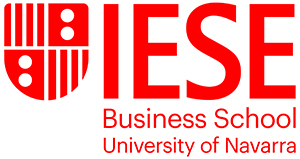Before the arrival of the internet, millennials and Simon Sinek urging us to “start with the why”, marketing strategists were more concerned with communicating an offering’s features (What does your product or service do? What need does it fulfill?) and its positioning (How is it different/better than the competition?) than the corporate values that support it.
Since then, millennials came of age and began questioning traditional profit-based business models. More socially aware than previous generations, they want their work to drive positive change, not merely generate material gain. At the same time, the digital revolution has fueled countless new avenues for customer touch points – while also making it harder for marketers to cut above the noise.
Why Purpose-Driven companies lead the market
Purpose-led marketing has found fertile terrain against this backdrop. In this new paradigm, the brand’s “why” is brought to the fore, the essence of what a company represents and how it communicates and conducts business. By aligning the brand with a pro-social issue, it is able to transcend the product’s tangible benefits and cultivate deeper, more emotional connections with customers.
Examples of successful purpose-driven campaigns abound, as global brands increasingly allocate more of their marketing spend to link pro-social causes with their brand purpose and brand positioning.
Nike’s “Dream Crazy” and “Dream Crazier” campaigns are two recent examples. Under the slogan, “It’s only crazy until you do it,” they expertly align with the emotions and rationale of Nike’s target groups, showcasing the challenges and accomplishments of athletic luminaries like tennis legend Serena Williams, snowboarder Chloe Kim and Olympian fencer Ibtihaj Muhammad, the first woman to wear a hijab in Olympic competition.
Outdoor clothing designer Patagonia – “We’re in business to save the planet” – is another forerunner of purpose-driven marketing. The California-based company commits 1 percent of its annual sales to environmental and land preservation causes and encourages other companies to follow its lead through the “One Percent for the Planet” platform, among a myriad of other initiatives.
In other instances, companies have formed coalitions to support a single cause, such as the countless programs spearheaded by the Ad Council over its 77-year history, including “She Can STEM” and bullying prevention campaigns.
But marketers, beware: success in purpose-driven content marketing requires more than supporting a cause or taking a stand. To build and sustain customers’ trust over time, mission-driven brands need to champion causes that matter to their audience and most importantly, practice what they preach.
IESE’s mission, through executive programs and masters, is to develop leaders who strive to have a deep, positive and lasting impact on people, companies and society through professional excellence, integrity and a spirit of service.
















